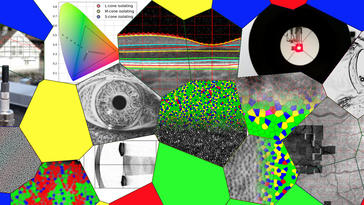Our research
Our interests are within the field of normal and deficient colour vision (colour-vision deficiencies and colour blindness/achromatopsia); visual optics and the development of the eye and refractive errors; the functional implications of normal, inherited and age related structural changes in the eye’s photoreceptor and retinal pigment epithelium cell layer and how this relates to how we see colour, patterns/details and motion, as well as sensitivity to light and dark.

Current projects
Visual optics: development of refractive error and accommodation
- The interplay between nature and nurture in myopia development (adolescents and young adults aged 16–24 years).
- Prediction of myopia development by cone opsin genes, colour vision and the prevailing illuminant (adolescents aged 16–19 years).
- Paraxial and wide-field ray-traced modelling of the human eye at different ages based on swept-source OCT imaging and wide-field wave front measurements.
- Southeast Norway Vision and Visuomotor Study (The SNOW Study)
Myopia - from genes and environment to cellular responses and treatment
The retina and visual function in health and disease
- Understanding variation in retinal structure by live imaging of retinal photoreceptors and retinal pigment epithelium cells and its implications on visual function.
- Identification of new targets for the treatment of ocular diseases by live imaging of the human eye.
- Automatic retinal image analyses for early detection of eye diseases.
- Rare eye diseases: retinal structure and visual function (aniridia, inherited retinal degenerations).
Artificial Intelligence for Diagnosing Retinal Diseases (AI D)
MyoTreat
For more effective treatment interventions and earlier diagnosis of myopia (nearsightedness).